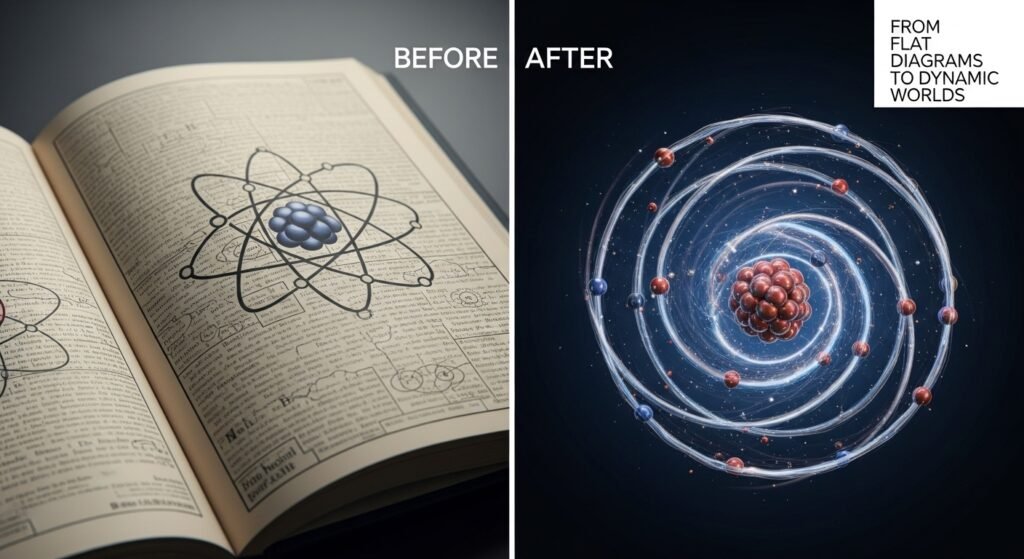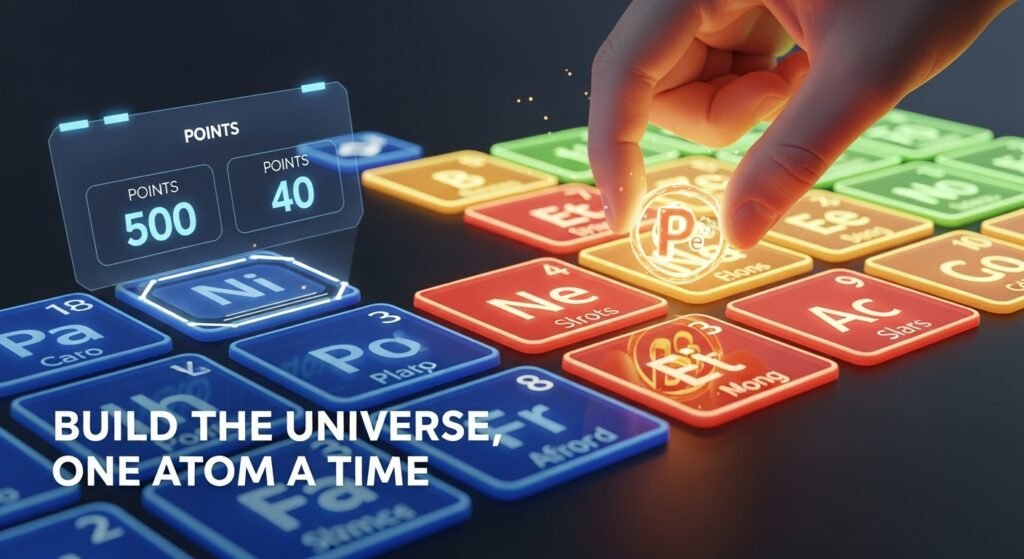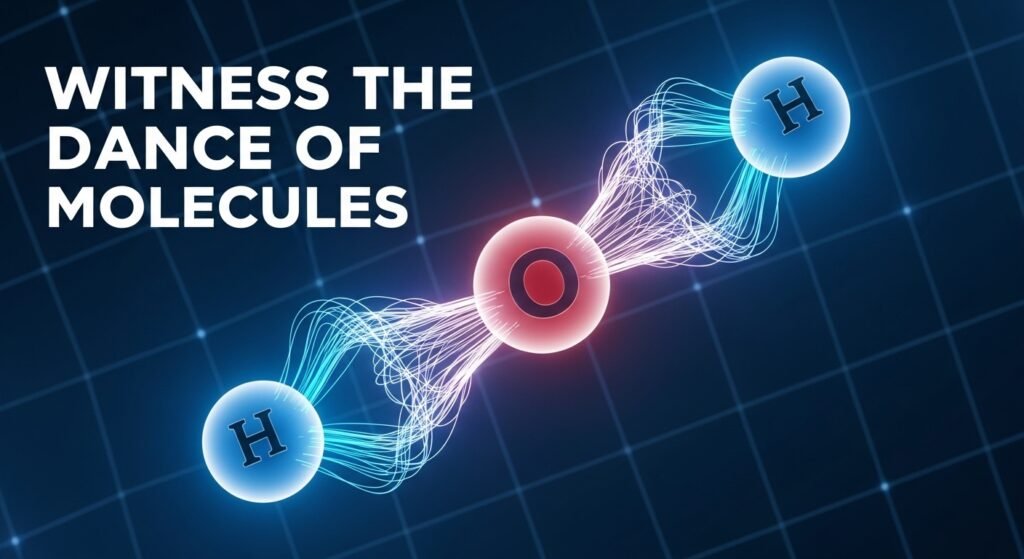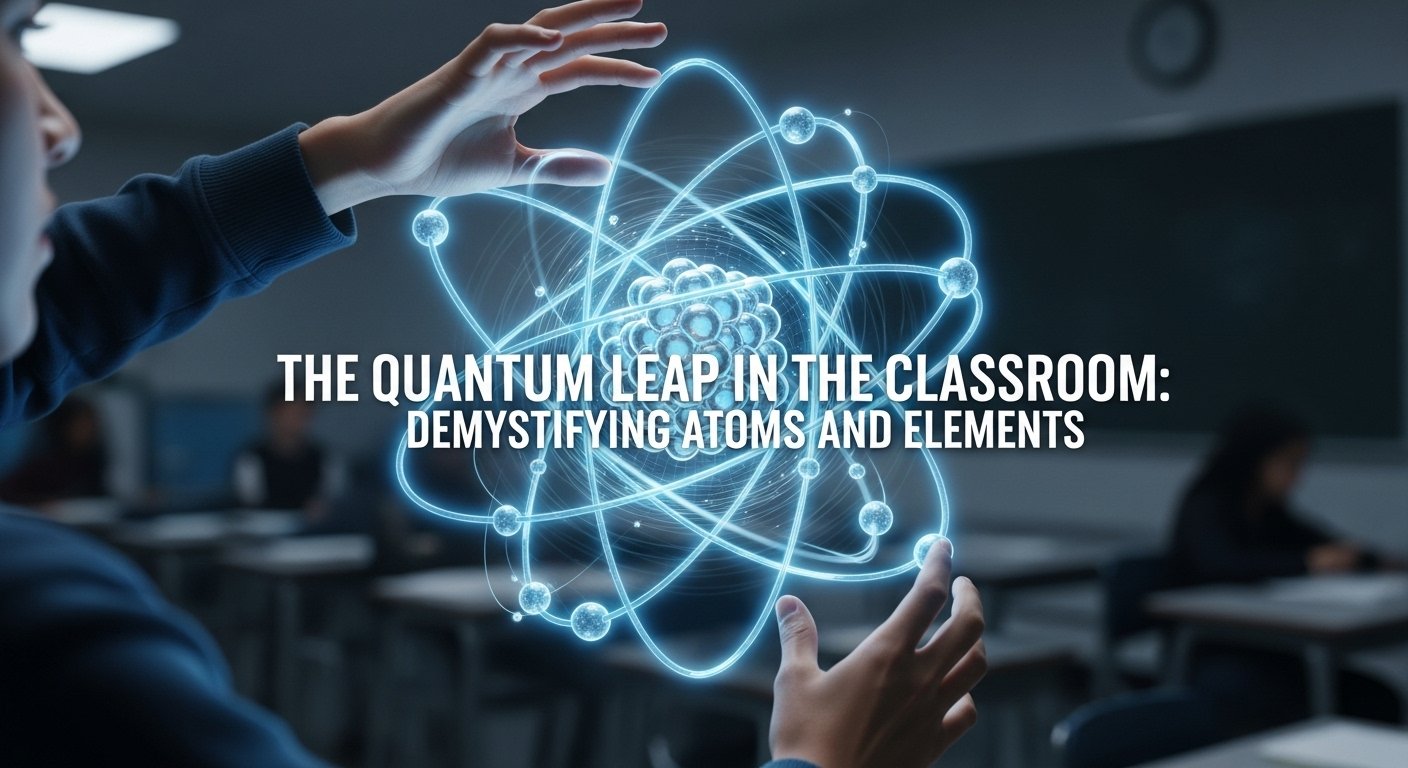The Quantum Leap in the Classroom: How AI in Education Demystifies Atoms and Elements
Do you remember the first time you saw a diagram of an atom in a science textbook? For me, it was a flat, planetary-looking model—a neat little nucleus with electrons orbiting like tiny moons. It was a simple, clean image, but it felt incredibly abstract, almost like a cartoon. It raised more questions than it answered. What holds it all together? What do those “orbitals” actually look like in 3D? How can these tiny, invisible things combine to create everything I see around me? Answering these questions used to require a huge leap of abstract imagination. Not anymore. Today, the key that unlocks this invisible universe is AI in Education.
As a tech enthusiast and an educator at PaidScripts.com, I’ve witnessed firsthand how technology can bridge the gap between abstract concepts and true understanding. The science of matter—the world of atoms, elements, and quantum mechanics—is perhaps the final frontier of this challenge. These are concepts we can’t see or touch, yet they are the fundamental reality of our world. The exciting news is that AI in Education is providing us with a revolutionary new set of tools. It’s like having a super-powered microscope that allows students not just to see the atomic world, but to step inside it, interact with it, and build an intuitive understanding that was once impossible.
5 Tips for Welcoming Classroom Visitors
Why the Building Blocks of the Universe Can Be So Baffling
The core challenge of teaching chemistry and physics has always been one of visualization. We are asking students to build a mental model of something that operates on rules and scales that are completely alien to our everyday experience. Flat, 2D diagrams in textbooks, while useful, often fall short. They can’t convey the constant motion of electrons, the three-dimensional shapes of molecules, or the immense empty space within an atom.
This is where traditional methods often create a roadblock to curiosity, leading to rote memorisation instead of genuine comprehension. AI in Education smashes through this roadblock by transforming passive learning into an active, immersive experience. It allows us to:
- Make the Invisible, Visible: Through 3D models and simulations, students can finally see the intricate structures they’ve only read about.
- Turn Abstract into Interactive: Instead of just memorising the periodic table, students can build elements themselves, adding protons and neutrons to see how they change.
- Personalise the Pace of Discovery: AI-driven platforms can tailor challenges to each student, providing extra support on tricky concepts like electron shells or offering advanced simulations for those ready to leap ahead.

The Old Lab vs. The New Quantum Classroom
The shift is as profound as the leap from a photograph to a fully interactive hologram. The learning environment becomes a playground for discovery.
| Traditional Chemistry Class | AI-Enhanced “Quantum” Classroom |
| Visualisation: 2D, static diagrams of atoms and molecules. | Visualisation: Interactive 3D/VR models of atoms that can be rotated, explored, and deconstructed. |
| Periodic Table: A static chart to be memorised. | Periodic Table: A gamified, interactive tool where students build elements to learn their properties. |
| Experiments: Limited by physical lab equipment and safety concerns. | Experiments: Unlimited virtual labs to simulate chemical reactions and explore atomic bonding safely. |
| Understanding: Often conceptual and based on memorisation. | Understanding: Intuitive and experiential, built through direct interaction. |
| Pacing: One-size-fits-all lecture pace. | Pacing: Personalised, with AI adapting to each student’s level of mastery. |
5 Tips for Welcoming Classroom Visitors
Your Virtual Toolkit: How AI Makes the Science of Matter Click
So, what do these tools actually look like in practice? Let’s explore how AI in Education is demystifying the core concepts of matter.
1. “Holding” an Atom in Your Hand: Visualising the Unseen
The atom is mostly empty space. It’s a difficult concept to grasp from a drawing that shows a crowded nucleus and neat little circles for electron orbits.
- The AI-Powered Experience: Imagine a student using an Augmented Reality (AR) app on a tablet. They point it at their desk, and a detailed, three-dimensional model of a carbon atom appears, floating in the room. They can walk around it, zoom in to see the protons and neutrons vibrating in the nucleus, and see the electron “cloud”—a true representation of quantum probability—swirling around it. This experience provides an instant, intuitive understanding of atomic structure and scale that no textbook ever could.
- Why It Works: This is a core principle of effective AI in Education. It leverages our natural spatial reasoning to make abstract concepts concrete.
AI Study Tips for High School to College Transition | Boost Learning in 2025

2. The Ultimate Chemistry Set: Building the Elements
The periodic table is the alphabet of the universe, but memorising it can be a slog.
- The AI-Powered Experience: A student logs into a gamified platform. Their mission is to “build” the first 18 elements. They start with one proton and one electron to build hydrogen. To build helium, they must add another proton, two neutrons, and another electron. The AI provides real-time feedback, explaining why adding a neutron creates an isotope or how adding an electron to the outer shell changes the element’s chemical properties.
- Why It Works: This transforms learning from a passive act of memorisation into an active process of construction. It’s learning by doing in its purest form, a cornerstone of engaging AI in Education.

3. Simulating the Unseen Dance: Understanding Chemical Bonds
How do atoms stick together to form molecules? Drawing dots and lines on a page (Lewis structures) is a useful shorthand, but it doesn’t show the dynamic reality.
- The AI-Powered Experience: In a virtual lab simulation, a student can select two hydrogen atoms and one oxygen atom. They can then “push” them together and watch as the AI renders the formation of a water molecule. The simulation visually demonstrates how the atoms share electrons in a covalent bond, and how this sharing results in the famous bent shape of the H₂O molecule. They could even switch to an ionic bond simulation, bringing sodium and chlorine atoms together and watching the dramatic transfer of an electron to form salt (NaCl).
- Why It Works: These simulations allow students to conduct “experiments” that would be impossible in the real world. This safe, interactive environment encourages experimentation and reinforces a deep understanding of cause and effect at a molecular level.
A Personal Insight: The Day the Electron Cloud Made Sense
I’ll never forget the first time I moved beyond the simple “planetary” model of the atom in my own studies. My professor started talking about electron clouds, orbitals, and probability functions. Honestly, it felt like science fiction. I could memorise the shapes of the s, p, and d orbitals for the exam, but I couldn’t truly picture them.
Years later, as an educator exploring new tech, I tried an early VR simulation of atomic orbitals. For the first time, I wasn’t looking at a drawing; I was standing inside the probability cloud. I could see the shimmering, ghost-like region where the electron was most likely to be. In that five-minute immersive experience, decades of abstract knowledge clicked into place with a profound “aha!” moment. It’s that feeling—that spark of genuine, intuitive understanding—that I strive to recreate with the resources we develop at PaidScripts.com. It’s the magic that AI in Education brings to the table.

Conclusion: Igniting a Passion for the Building Blocks of Reality
The science of matter is, in essence, the story of us. It’s the story of how a handful of fundamental particles can combine in spectacular ways to create stars, planets, and people. For too long, the complexity of this story has made it inaccessible to many.
AI in Education is changing that narrative. By providing tools that make the invisible visible and the abstract interactive, we are not just teaching science more effectively; we are igniting a passion for discovery. We are empowering the next generation of chemists, physicists, and engineers by giving them a playground to explore the very fabric of reality. The journey into the atom is no longer a leap of faith; it’s a field trip that any student can take.
If you could use an AI-powered tool to visualise any scientific concept, what would you choose to explore first? The inside of a black hole? The double helix of DNA? Share your curiosity in the comments below!
AI Study Tips for High School to College Transition | Boost Learning in 2025




Pingback: Esports Personalized Learning for School Engagement - PaidScripts -Tech Education Hub: Courses & Student Resources